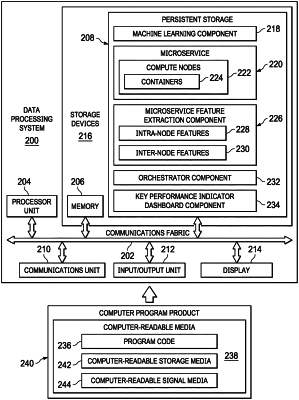| CPC G06F 9/22 (2013.01) [G06F 9/5072 (2013.01); G06F 9/5077 (2013.01); G06F 9/541 (2013.01); G06F 18/213 (2023.01); G06F 18/2155 (2023.01)] | 17 Claims |

|
1. A computer-implemented method for automatically performing container scaling and migration for container-based microservices, the computer-implemented method comprising:
extracting, by a computer, a first set of features from each respective microservice of a plurality of different microservices;
predicting, by the computer, using a trained forecasting model and the first set of features extracted from each respective microservice, a number of containers required at a future point in time for each respective microservice of the plurality of different microservices;
assigning, by the computer, a scaling label and a scaling value to each respective microservice of the plurality of different microservices based on a predicted change in a current number of containers corresponding to each respective microservice according to the number of containers required at the future point in time for each respective microservice;
adjusting, by the computer, based on the scaling label and the scaling value assigned to each respective microservice, the current number of containers corresponding to each respective microservice of the plurality of different microservices automatically;
extracting, by the computer, a second set of features from each respective microservice of the plurality of different microservices; and
determining, by the computer, based on the second set of features extracted from each respective microservice, a degree of microservice similarity between certain microservices of the plurality of different microservices.
|